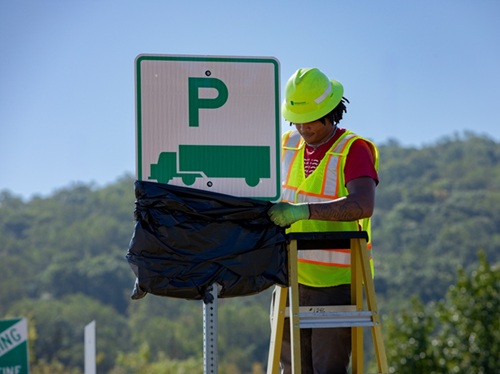Across the country, several state departments of transportation are engaged in ways to help the highway freight sector by improving truck parking availability.
[Above photo by PennDOT]
For example, the Pennsylvania Department of Transportation recently unveiled plans to help add 1,202 extra truck parking spaces in 133 locations statewide by the end of 2026.
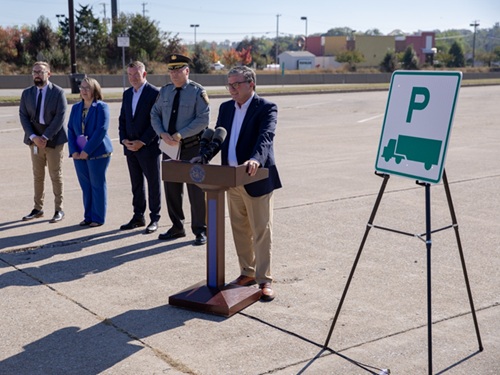
In addition, the Pennsylvania Turnpike is evaluating opportunities for more than 600 additional spaces across its system.
The agency explained that this is the first statewide expansion of designated parking spaces other than through facility construction projects.
That effort will provide safe options for commercial drivers to meet federal hours-of-service rest requirements, helping to address a longstanding, nationwide challenge and improving driver safety.
“Truck parking is a nationwide issue, and with the high volume of freight traffic coming through Pennsylvania, we needed to tackle this problem,” explained Mike Carroll, PennDOT secretary, in a statement.
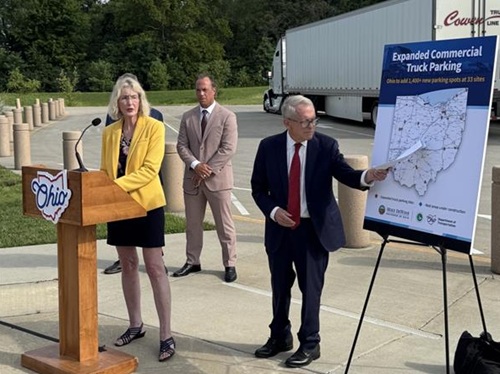
[Editor’s note: The Ohio Department of Transportation launched a similar truck parking expansion initiative in July.]
“As a commercial driver’s license-holder myself, I know how important this commonsense approach is to our economy and workforce,” he added. “By adding these spots – and looking at ways to add even more – we’re giving truckers many more options to safely park and meet their rest requirements.”
PennDOT said its designated truck parking spots will be established on interstate on-ramps with no sight distance or safety concerns, weigh stations used for Pennsylvania State Police (PSP) motor carrier safety enforcement, and various other locations within highway right of way.
The agency said PennDOT and PSP staff collaborated closely to identify sites that can be designated quickly and cost-effectively, adding that spots will be marked with truck-parking signage installed by PennDOT.
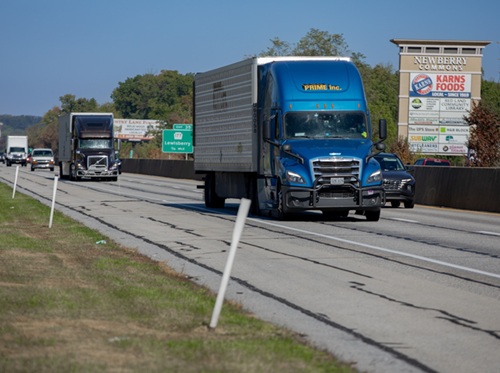
[Editor’s note: In April, the American Transportation Research Institute and the American Association of State Highway and Transportation Officials recently released a report that highlights insights and strategies for expanding truck parking at public rest areas across the country. That report included the results of a joint ATRI-AASHTO survey of 50 state departments of transportation to understand the costs and components of public truck parking spaces.]
Meanwhile, the Idaho Transportation Department (ITD) – using funds provided by the Carbon-Reduction Program established by the Infrastructure Investment and Jobs Act – has developed a tool to bring together data, maps, and analysis to help it evaluate potential truck parking projects across the state highway system.
“The Truck Parking Demand Tool provides information for stakeholders and ITD staff to evaluate existing and propose new projects to expand our truck-parking network,” explained Abby Peterson, one of ITD’s senior planners, in a statement.
“For communities, more available parking cuts down on unnecessary idling and emissions from trucks circling in search of spaces, directly supporting cleaner air and healthier environments,” Peterson added. “For the freight industry, efficient access to safe parking reduces delays, keeps goods moving, and strengthens supply chain reliability.”
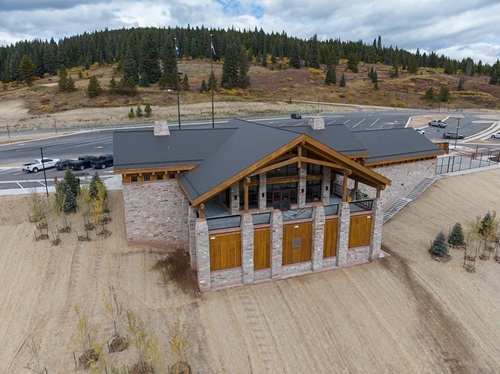
In the western region of the country, the Colorado Department of Transportation recently cut the ribbon on the newly reconstructed Vail Pass Rest Area along the heavily traveled I-70 Mountain Corridor.
The modernized facility offers expanded and safer parking for cars and trucks, fully accessible restrooms and amenities, and sustainable design features that reduce long-term operating costs.
The project also reconfigured the space to integrate the popular Ten Mile Canyon Trail into the rest area, creating a safer and more seamless experience for both motorists and recreationalists.
“Vail Pass is more than just a road, it’s a gateway to our mountain communities, our tourism economy and the Colorado lifestyle,” said Shoshana Lew, executive director of the Colorado DOT, in a statement.
“This new rest area makes travel safer and more welcoming for everyone who comes through our state, from truckers to families on vacation,” she added. “It shows what happens when we invest in infrastructure that improves both safety and quality of life.”
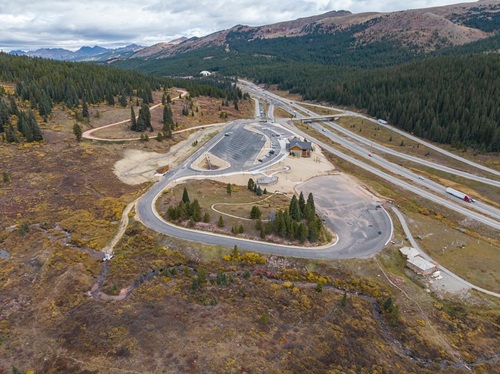
The Vail Pass Rest Area project, on which construction began in May 2023, is a part of the agency’s ongoing effort to improve safety and resilience along the I-70 Mountain Corridor, ensuring the state’s transportation system continues to support both local communities and Colorado’s statewide economy.
“At over 10,000 feet, Vail Pass is one of the most challenging and important corridors in Colorado,” noted Shawn Smith, director of the Colorado DOT Division of Maintenance and Operations. “This rest area isn’t just about convenience; it directly supports safety by giving motorists a place to pause and by providing increased capacity for equipment storage that will improve winter maintenance operational readiness. Our teams work year-round in some of the toughest conditions in the state and this new facility will allow us to respond to various hazards on the roadway faster and more efficiently.”
The agency said its project team, led by Colorado DOT’s property management team, worked through mountain weather and short construction seasons to deliver the facility ahead of the winter 2025 season.
“Building at 10,000 feet comes with unique challenges, including weather, altitude and a short construction season, but our crews and contractor, Taylor Kohrs, rose to the occasion,” said Hope Wright, Colorado DOT’s real estate asset manager. “Whether you’re a truck driver, a family on a road trip, or someone heading onto the trails, this rest area is built to improve your experience.”
 Nation
Nation
Building More Resilient Transportation Systems
November 21, 2025 Nation
Nation
